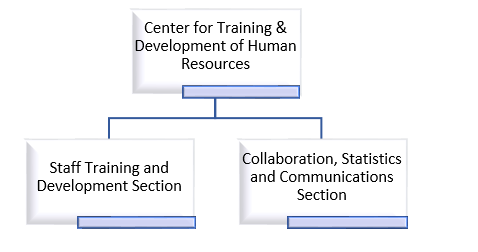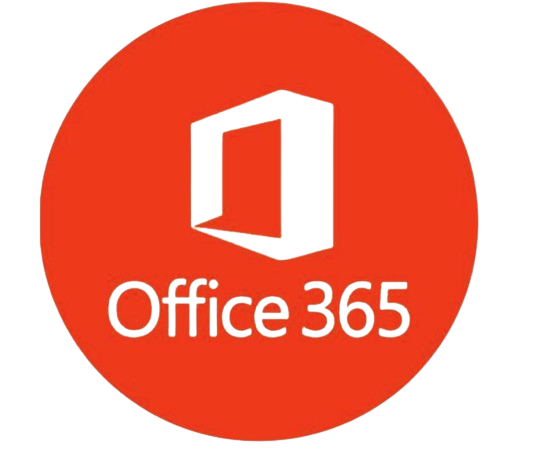Dhofar University places a high value on human resource development and career advancement. Consequently, it offers its employees continuous opportunities for professional development throughout their employment at the university. A commitment to diversity and inclusion means that DU will ensure that all employees have access to training and academic qualifications that promote employee engagement and job satisfaction. The establishment of a dedicated centre for training and development of human resources (CTDHR) at DU is essential to address the training demands of a growing number of young non-academic personnel joining the university.
Developing and managing a Training and Development system that is aligned with DU’s goals and objectives, as well as developing a continuous professional development program through the identification of employees’ job duties and responsibilities and the required competencies to fulfil those responsibilities, are among the responsibilities of CTDHR.
Mission
Equip the university employees with the necessary professional training to improve their professional competence and meet DU’s workplace performance standards.
Vision
Ensure that Dhofar University’s human resources are competent and well-trained to promote the institution’s mission, vision, and values.
Values
- Excellence: Our commitment to excellence drives us to do better consistently.
- Integrity: We believe in honesty and coherence between our words and actions.
- Responsibility: We accept full responsibility for our actions all the time.
- Commitment: We are committed to give our best and deliver what we promise.
- Transparency: For us, transparency is the foundation of trust.
- Adaptability: We believe adaptability is the key to success in an ever-changing environment.
Goals
- Conduct and review the Training needs analysis
- Enhance non-academic staff capabilities and performance
- Support the growth of employee’s motivation to increase job satisfaction and workplace competence
- Collect statistics and feedback on the non-academic staff’s professional competency growth
- Establish effective internal and external communications
Administrative Structure of CTDHR

a) CTDHR Functions
- Develop a Training and Development System and oversee its implementation
- Conduct job needs analysis based on the competency matrix for each position and Identify training needs for all levels of staff
- Plan and organize workshops, and training programs, both short and long, based on the professional need of the employees with the objective of increasing the productivity of staff.
- Prepare an annual training plan based on the training needs of the non-academic staff
- Support the university’s efforts to increase staff motivation, resulting in increased job satisfaction and competency.
- Assist employees in understanding the vision, mission, and values of DU, and train them on their roles, responsibilities, rights, and code of professional ethics.
- Collect statistics and feedback about professional skill development among DU staff to improve the training and development
- plan and support the university in formulating its future strategic initiatives on organizational development.
- Liaison with DU academic units and other universities to source appropriate resource persons for training needs.
- Exploring the available opportunities for training / higher education grants provided by governmental organizations, universities, and private institutions.
b) Staff Training and Development Section (STDS) Functions
- Organize annual specialized training programmes in accordance with the training needs of DU’s units
- Supervise and evaluate the internal and external training programmes.
- Update and modify the Competency Matrix in consultation with DU’s units
- Submit quarterly reports on training and development activities.
c) Collaboration, Statistics and Communications Section (CSCS) Functions
- Identify and collaborate with the appropriate local and regional training institutes to enroll designated employees in external training opportunities.
- Assess the availability of training and higher education grants from the government, universities, and the private sector.
- Build and update data-gathering forms and tools.
- Obtain and analyze data on training and development.
- Coordinate with DU academic units and other training institutions to determine the appropriate training resources and instructor selection.
- Introduction
-
Dhofar University places a high value on human resource development and career advancement. Consequently, it offers its employees continuous opportunities for professional development throughout their employment at the university. A commitment to diversity and inclusion means that DU will ensure that all employees have access to training and academic qualifications that promote employee engagement and job satisfaction. The establishment of a dedicated centre for training and development of human resources (CTDHR) at DU is essential to address the training demands of a growing number of young non-academic personnel joining the university.
Developing and managing a Training and Development system that is aligned with DU’s goals and objectives, as well as developing a continuous professional development program through the identification of employees’ job duties and responsibilities and the required competencies to fulfil those responsibilities, are among the responsibilities of CTDHR.
- About CTDHR
-
Mission
Equip the university employees with the necessary professional training to improve their professional competence and meet DU’s workplace performance standards.
Vision
Ensure that Dhofar University’s human resources are competent and well-trained to promote the institution’s mission, vision, and values.
Values
- Excellence: Our commitment to excellence drives us to do better consistently.
- Integrity: We believe in honesty and coherence between our words and actions.
- Responsibility: We accept full responsibility for our actions all the time.
- Commitment: We are committed to give our best and deliver what we promise.
- Transparency: For us, transparency is the foundation of trust.
- Adaptability: We believe adaptability is the key to success in an ever-changing environment.
Goals
- Conduct and review the Training needs analysis
- Enhance non-academic staff capabilities and performance
- Support the growth of employee’s motivation to increase job satisfaction and workplace competence
- Collect statistics and feedback on the non-academic staff’s professional competency growth
- Establish effective internal and external communications
- Administrative Structure
-
Administrative Structure of CTDHR

- CTDHR Functions
-
a) CTDHR Functions
- Develop a Training and Development System and oversee its implementation
- Conduct job needs analysis based on the competency matrix for each position and Identify training needs for all levels of staff
- Plan and organize workshops, and training programs, both short and long, based on the professional need of the employees with the objective of increasing the productivity of staff.
- Prepare an annual training plan based on the training needs of the non-academic staff
- Support the university’s efforts to increase staff motivation, resulting in increased job satisfaction and competency.
- Assist employees in understanding the vision, mission, and values of DU, and train them on their roles, responsibilities, rights, and code of professional ethics.
- Collect statistics and feedback about professional skill development among DU staff to improve the training and development
- plan and support the university in formulating its future strategic initiatives on organizational development.
- Liaison with DU academic units and other universities to source appropriate resource persons for training needs.
- Exploring the available opportunities for training / higher education grants provided by governmental organizations, universities, and private institutions.
b) Staff Training and Development Section (STDS) Functions
- Organize annual specialized training programmes in accordance with the training needs of DU’s units
- Supervise and evaluate the internal and external training programmes.
- Update and modify the Competency Matrix in consultation with DU’s units
- Submit quarterly reports on training and development activities.
c) Collaboration, Statistics and Communications Section (CSCS) Functions
- Identify and collaborate with the appropriate local and regional training institutes to enroll designated employees in external training opportunities.
- Assess the availability of training and higher education grants from the government, universities, and the private sector.
- Build and update data-gathering forms and tools.
- Obtain and analyze data on training and development.
- Coordinate with DU academic units and other training institutions to determine the appropriate training resources and instructor selection.



